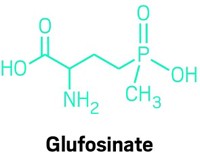Advertisement
Grab your lab coat. Let's get started
Welcome!
Welcome!
Create an account below to get 6 C&EN articles per month, receive newsletters and more - all free.
It seems this is your first time logging in online. Please enter the following information to continue.
As an ACS member you automatically get access to this site. All we need is few more details to create your reading experience.
Not you? Sign in with a different account.
Not you? Sign in with a different account.
ERROR 1
ERROR 1
ERROR 2
ERROR 2
ERROR 2
ERROR 2
ERROR 2
Password and Confirm password must match.
If you have an ACS member number, please enter it here so we can link this account to your membership. (optional)
ERROR 2
ACS values your privacy. By submitting your information, you are gaining access to C&EN and subscribing to our weekly newsletter. We use the information you provide to make your reading experience better, and we will never sell your data to third party members.
Environment
Court Ruling Favors Monsanto
Seed Traits: Dupont cannot combine its own herbicide tolerance with Monsanto's
by Melody Voith
January 25, 2010
| A version of this story appeared in
Volume 88, Issue 4

Monsanto has won the first battle in what may be a long season of skirmishes with rival seed producer Pioneer Hi-Bred, a DuPont business.
In May 2009, Monsanto filed a lawsuit to prevent Pioneer from combining traits for crop resistance to glyphosate, a common herbicide sold as Roundup by Monsanto. Pioneer had planned to create corn and soybean seeds containing both Monsanto’s Roundup Ready and its own Optimum GAT trait for herbicide tolerance. To do so, Monsanto contended, would violate Pioneer’s license for Roundup Ready seed technology.
In what it described as a narrow ruling on the language of the license, the U.S. District Court for the Eastern District of Missouri sided with Monsanto, saying Pioneer was not licensed to combine the two traits.
But DuPont says it will pursue claims against Monsanto for antitrust and patent fraud. And it accuses Monsanto of preventing farmers from planting better seeds, claiming the combined traits provide 6% better yield than Roundup Ready alone.
In part because Monsanto commands more than 90% of the U.S. market for genetically engineered soybean traits, the company has also attracted the attention of the Department of Justice. In December 2009, DOJ opened an investigation into possible anticompetitive business practices in the seed industry.
Another likely reason for the scrutiny, analysts say, is that in 2014, Monsanto’s Roundup Ready soybeans will be the first genetically engineered crop to lose patent protection. The company’s rivals are concerned Monsanto will try to block the launch of generic seeds. Monsanto has stated that the first-generation soybeans “would remain available after patent expiry and would be royalty-free to farmers beginning in the 2015 season.”
Experts know of few precedents for challenges to intellectual property for genetically engineered traits. John E. Roberts, a stock analyst with Buckingham Research, sees an apt comparison in the computer world. If seeds are analogous to computer hardware, and traits are like computer software, he asks, “is this conceptually different than Europe’s investigation into Microsoft’s efforts to maintain Internet Explorer’s dominance on Windows machines?”
As a result of that investigation, Microsoft agreed that European computers running the Windows operating system would allow users to choose from a list of Internet browsers.




Join the conversation
Contact the reporter
Submit a Letter to the Editor for publication
Engage with us on Twitter